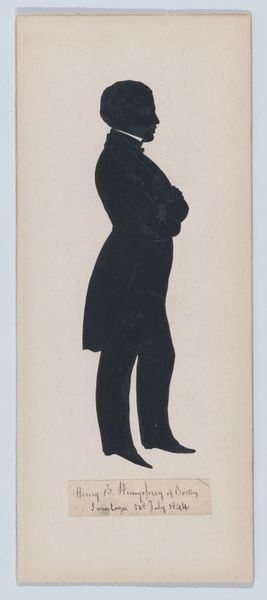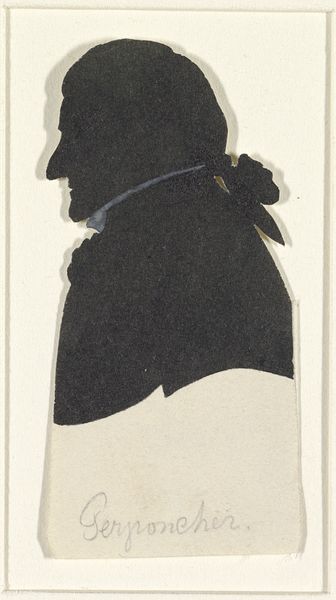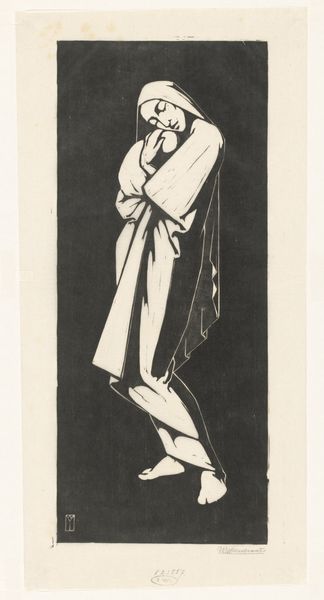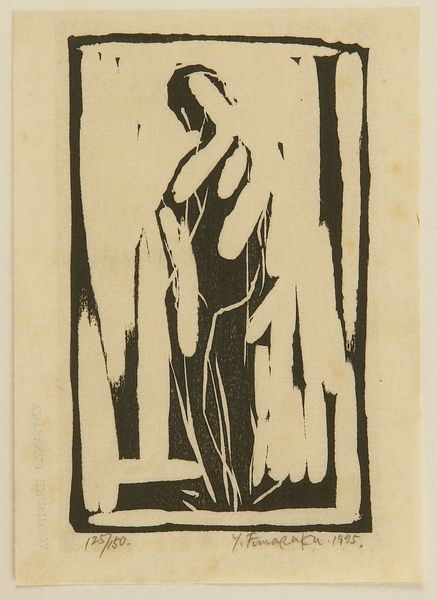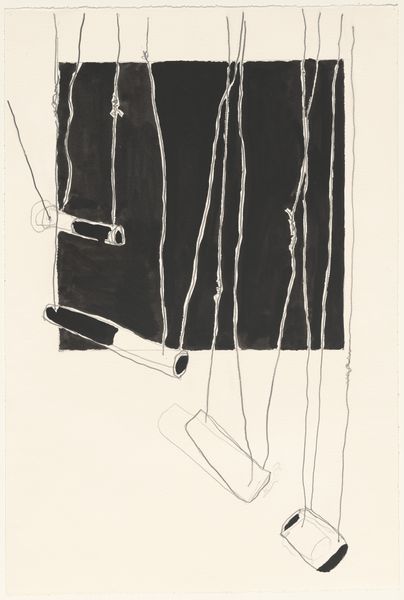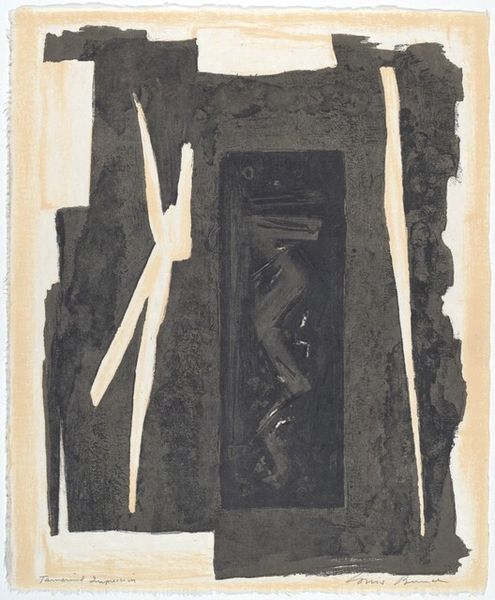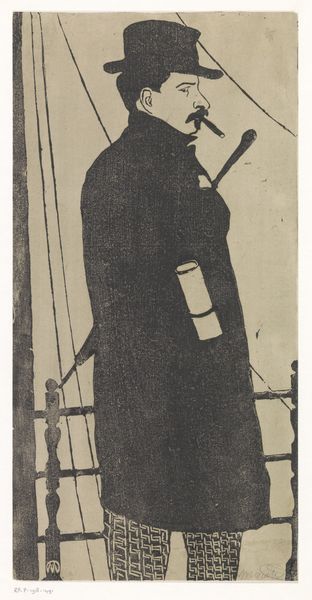
drawing, print, linocut
#
portrait
#
drawing
#
art-nouveau
#
cartoon like
# print
#
linocut
#
caricature
#
caricature
#
figuration
#
form
#
expressionism
#
line
Dimensions: height 195 mm, width 105 mm
Copyright: Rijks Museum: Open Domain
Editor: This striking linocut from 1913, “Jaapje met cape” by Samuel Jessurun de Mesquita, really grabs your attention with its stark black and white contrast. It feels both medieval and modern at the same time. I'm curious, what's your interpretation of this bold portrait? Curator: It speaks to me of hidden depths, wouldn't you say? The figure, almost swallowed by the darkness of the cape, yet defiant. I love the ambiguity, that suggestion of art nouveau in the flowing lines, twisted by an undercurrent of nascent expressionism. The face is just a triangle, and the eyes glint dangerously. It is, perhaps, the very act of observation, turning back to scrutinize *us*. It makes me wonder: What is Jaapje hiding, or perhaps more accurately, *who* is he protecting himself from? What do *you* see? Editor: I like that idea, this notion of Jaapje observing us too, of feeling slightly intimidated. But it’s such a simplified form, that bold reduction, that some of the more nuanced interpretations escaped me at first. It really seems a powerful exploration of form itself, right? Curator: Precisely! It's Mesquita stripping away the excess, presenting the *essence* of a figure draped in shadow. Look closely – is it melancholy, a hidden anger? Linocut is an interesting medium to chose for a portrait, especially with art nouveau’s attention to detail and artifice – how might he feel trapped by the constraints of his position? The work embodies a dialogue between representation and abstraction; which leaves, thankfully, room for the viewer's imagination. I keep imagining he has just been called inside for supper. Editor: I’m definitely seeing so much more of those tensions now, thank you. This artwork's a real puzzle box of ideas, it seems!
Comments
No comments
Be the first to comment and join the conversation on the ultimate creative platform.
